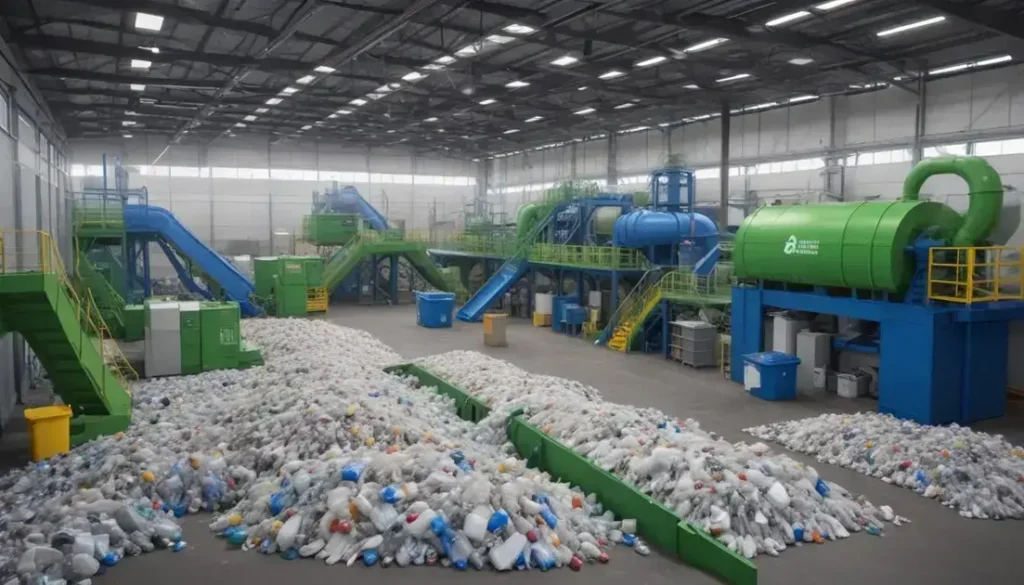A sustainable procurement strategy focuses on sourcing goods and services that minimize environmental and social impact, ensuring long-term organizational value while promoting ethical and eco-friendly practices.
In today’s rapidly changing energy landscape, **renewable energy** procurement has become more critical than ever. How can Indian businesses adapt to this shift?
Understanding Renewable Energy Procurement
Understanding renewable energy procurement is essential for businesses aiming to navigate the evolving energy landscape. Companies are now prioritizing sustainable sources to align with global decarbonisation targets. This shift not only helps the environment but also enhances a company’s market position.
In this context, businesses must explore various procurement strategies. Long-term power purchase agreements (PPAs) are increasingly popular, offering stable pricing and reducing exposure to market volatility. Additionally, the integration of virtual PPAs is gaining traction, allowing companies to support renewable projects even if they can’t directly consume the energy.
The role of stakeholders is also pivotal. Engaging with energy consultants can help firms evaluate their needs, define priorities, and navigate complex regulations. Building a strong energy strategy involves collaboration between sustainability and operational teams to ensure that renewable energy goals are met efficiently.
Moreover, exploring financing options is crucial. Companies need to assess funding mechanisms that can support their renewable energy initiatives. From government incentives to private investments, the right financial strategy can make a significant difference in the viability of these projects.
The Role of Decarbonisation
The role of decarbonisation is crucial in the transition towards a sustainable energy future. This process entails reducing carbon emissions to combat climate change and improve air quality. As governments and businesses commit to net-zero goals, understanding decarbonisation strategies becomes essential.
One primary approach is energy efficiency. By optimizing energy use in operations, companies can significantly lower their carbon footprint. Implementing energy-efficient technologies not only helps in reducing emissions but also lowers operational costs.
Another strategy involves investing in renewable energy sources. Transitioning from fossil fuels to solar, wind, and hydroelectric power allows businesses to source energy sustainably. This shift not only supports decarbonisation but also aligns with consumer demand for green practices.
Carbon offsetting is an additional tactic companies are adopting. By investing in projects that absorb CO2, such as reforestation, firms can offset their emissions, further contributing to their environmental goals. Companies should thoroughly evaluate these options to create a robust decarbonisation roadmap that meets their specific needs.
Emerging Funding Mechanisms
Emerging funding mechanisms are transforming the renewable energy landscape by making sustainable projects more financially viable. Innovative financing options are crucial for businesses looking to transition to cleaner energy solutions without facing prohibitive initial costs.
One viable option is green bonds, which are specifically used to raise funds for environmentally friendly projects. These bonds attract investors interested in supporting sustainability while ensuring a financial return. This method has gained traction, making it easier for companies to secure capital.
Another approach includes crowdfunding, which enables individuals and small investors to contribute to renewable energy projects. Platforms that facilitate crowdfunding provide access to finances for startups and small businesses focused on sustainability, democratizing investment opportunities.
Additionally, government incentives, such as tax credits and subsidies, play a pivotal role in financing renewable energy initiatives. By reducing the financial burden on companies, these incentives encourage greater participation in the transition to green energy.
Finally, public-private partnerships offer collaborative funding opportunities. These partnerships combine resources and expertise from both sectors, enhancing project feasibility and accelerating renewable energy adoption across various industries.
Virtual Power Purchase Agreements Explained
Virtual Power Purchase Agreements (VPPAs) are innovative financial contracts that facilitate businesses in securing renewable energy without a direct physical connection to energy assets. These agreements allow companies to buy energy from renewable sources while maintaining flexibility in their energy procurement.
In a VPPA, the buyer agrees to purchase energy at a fixed price, providing price stability and predictability. This is particularly beneficial for companies looking to hedge against fluctuating energy prices. The agreement typically involves wind or solar power projects that generate Renewable Energy Certificates (RECs), which can help businesses meet their sustainability goals.
One of the significant advantages of a VPPA is its ability to enhance a company’s renewable energy portfolio without the need to own or operate energy facilities. This means businesses can claim the environmental benefits associated with the renewable energy produced, even if the power is delivered to the grid.
Moreover, VPPAs contribute to the growth of renewable energy infrastructure by providing developers with long-term revenue certainty. This encourages investment in new projects, ultimately leading to increased renewable energy capacity in the market. Companies interested in sustainability should consider VPPAs as a strategic tool to improve their energy sourcing while supporting the transition to a greener economy.
Assessing Energy Needs
Assessing energy needs is a fundamental step for businesses aiming to transition to renewable energy sources. Understanding the specific energy requirements allows companies to make informed decisions about energy procurement and sustainability goals. By evaluating current energy usage, businesses can identify inefficiencies and areas for improvement.
A thorough energy assessment involves analyzing historical energy consumption data. This data helps stakeholders understand peak usage times and overall consumption patterns. With this information, firms can optimize their energy management strategies and explore potential savings.
Furthermore, it is essential to consider future energy needs. Factors such as business growth, operational changes, and advancements in technology can significantly influence energy consumption. By anticipating these needs, companies can develop scalable energy solutions that align with long-term sustainability objectives.
Another critical aspect of assessing energy needs is engaging with experts. Collaborating with energy consultants can provide insights into available renewable energy technologies and funding opportunities. These professionals can assist in creating a tailored energy plan that meets the organization’s specific requirements while promoting a sustainable approach.
Defining Organisational Priorities
Defining organisational priorities is essential for companies aiming to integrate sustainability into their operations. A clear understanding of priorities ensures that energy management aligns with broader corporate goals. This process involves assessing how energy use impacts not only operational efficiency but also the company’s environmental footprint.
Identifying key priorities begins with stakeholder engagement. Involving leaders from various departments—such as finance, operations, and sustainability—can provide diverse perspectives on what matters most. This collaborative approach helps align energy strategies with corporate objectives, such as cost reduction, brand reputation, and regulatory compliance.
Additionally, organisations should prioritise initiatives that offer the highest impact regarding both sustainability and financial return. Implementing energy-efficient technologies often ranks high on this list, as it can result in substantial cost savings while reducing greenhouse gas emissions.
Moreover, establishing metrics for success is crucial. Defining clear KPIs allows companies to measure the effectiveness of their energy strategies. Regularly reviewing these metrics can help adapt priorities to changes in the organisational landscape, ensuring that sustainability remains at the forefront.
Consultation with Experts
Consultation with experts is a vital step in shaping an effective energy strategy for organizations. Engaging specialists provides insights into best practices, technological advancements, and regulatory compliance, enabling businesses to navigate the complex landscape of renewable energy smoothly.
Experts can conduct detailed assessments of a company’s current energy usage, identifying inefficiencies and recommending solutions tailored to organizational needs. These assessments often reveal hidden costs and opportunities for savings, allowing companies to optimize their energy management.
Additionally, professionals in the field can guide organizations on selecting the most suitable renewable energy technologies, such as solar or wind, based on location-specific factors and energy requirements. By leveraging their expertise, companies can make informed decisions that align with both financial and sustainability objectives.
Moreover, staying updated on regulatory changes is essential in the evolving energy sector. Experts can help organizations comply with local and international regulations, avoiding potential fines and enhancing corporate reputation. This proactive approach not only safeguards businesses but also positions them as leaders in sustainability.
Building a Sustainable Procurement Strategy
Building a sustainable procurement strategy is essential for organizations that wish to align their purchasing practices with environmental and social responsibility. This strategy focuses on sourcing goods and services that minimize negative impacts on people and the planet while maximizing long-term value.
To develop an effective strategy, companies should begin by assessing their supply chains. This involves evaluating suppliers based on their environmental practices and ethical standards. Setting clear sustainability criteria helps identify partners that share similar values, fostering collaboration toward common goals.
Another important aspect is engaging with stakeholders throughout the procurement process. By involving teams from different departments, organizations can gain diverse insights and ensure that sustainability considerations are integrated into every stage of procurement.
Moreover, embracing innovation in sustainable materials and technologies can enhance procurement strategies. Investing in eco-friendly products not only supports sustainability efforts but can also yield cost savings over time. Additionally, training and educating employees on sustainable procurement practices are vital to ensure widespread adoption and adherence to the strategy.
In Conclusion: Embracing Sustainable Practices
Implementing a sustainable procurement strategy is essential for businesses seeking to thrive in today’s eco-conscious market. By focusing on ethical sourcing, engaging stakeholders, and promoting eco-friendly products, organizations can significantly reduce their environmental footprint.
Furthermore, collaborating with like-minded suppliers not only enhances sustainability efforts but also drives innovation. As more companies commit to sustainability, investing in green practices can lead to long-term benefits, including cost savings and improved brand reputation.
The journey towards sustainability is ongoing, and it requires commitment and adaptation. By prioritizing sustainable procurement, businesses can play a crucial role in creating a cleaner, greener future for all.
Frequently Asked Questions
What is a sustainable procurement strategy?
A sustainable procurement strategy focuses on sourcing goods and services that minimize environmental and social impacts while providing long-term value.
How can businesses assess their energy needs effectively?
Businesses can effectively assess their energy needs by analyzing historical consumption data and engaging stakeholders to identify current and future energy requirements.
What role do experts play in building a sustainable procurement strategy?
Experts provide valuable insights into best practices, help identify sustainable suppliers, and ensure compliance with regulations, guiding businesses in optimizing their procurement processes.
Why is stakeholder engagement important in procurement?
Engaging stakeholders helps gather diverse perspectives, ensuring that sustainability considerations are integrated into every stage of the procurement process.
How can companies measure the success of their sustainability initiatives?
Companies can measure the success of sustainability initiatives by defining clear KPIs and regularly reviewing metrics related to energy consumption, cost savings, and supplier performance.
What are some benefits of collaborating with sustainable suppliers?
Collaborating with sustainable suppliers enhances eco-friendly practices, drives innovation, and can lead to cost savings, ultimately supporting a company’s sustainability goals.


